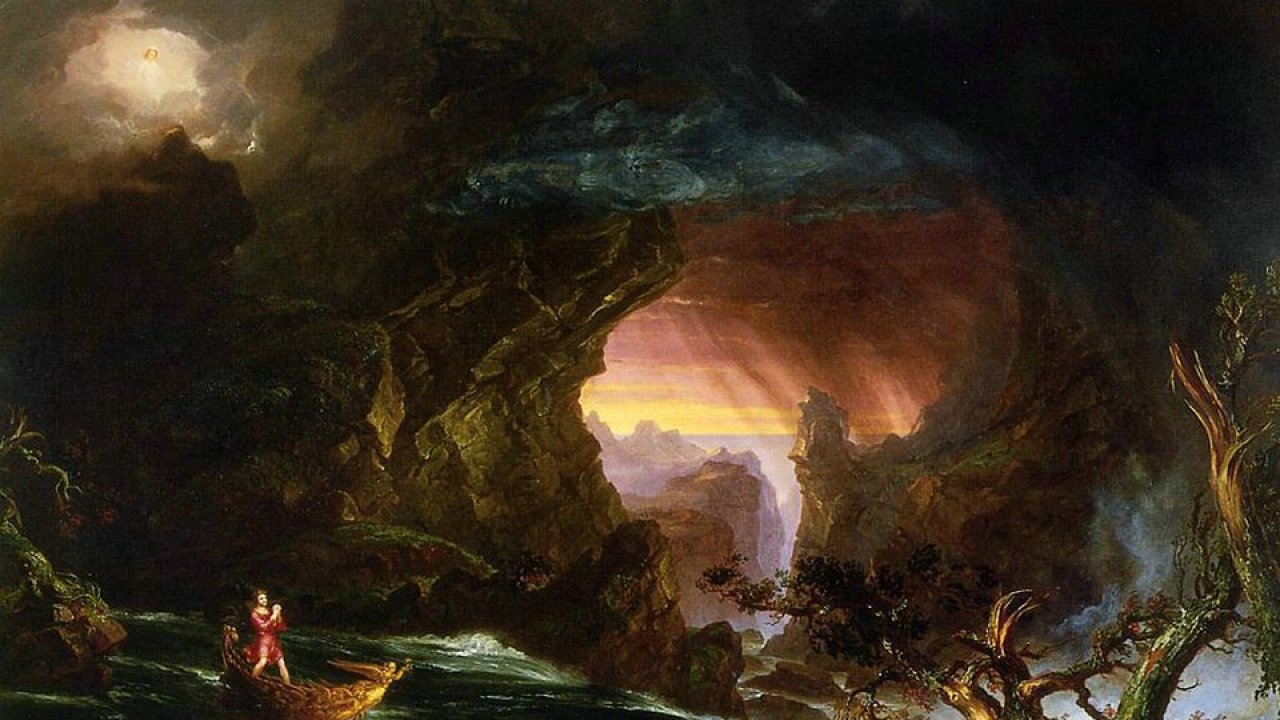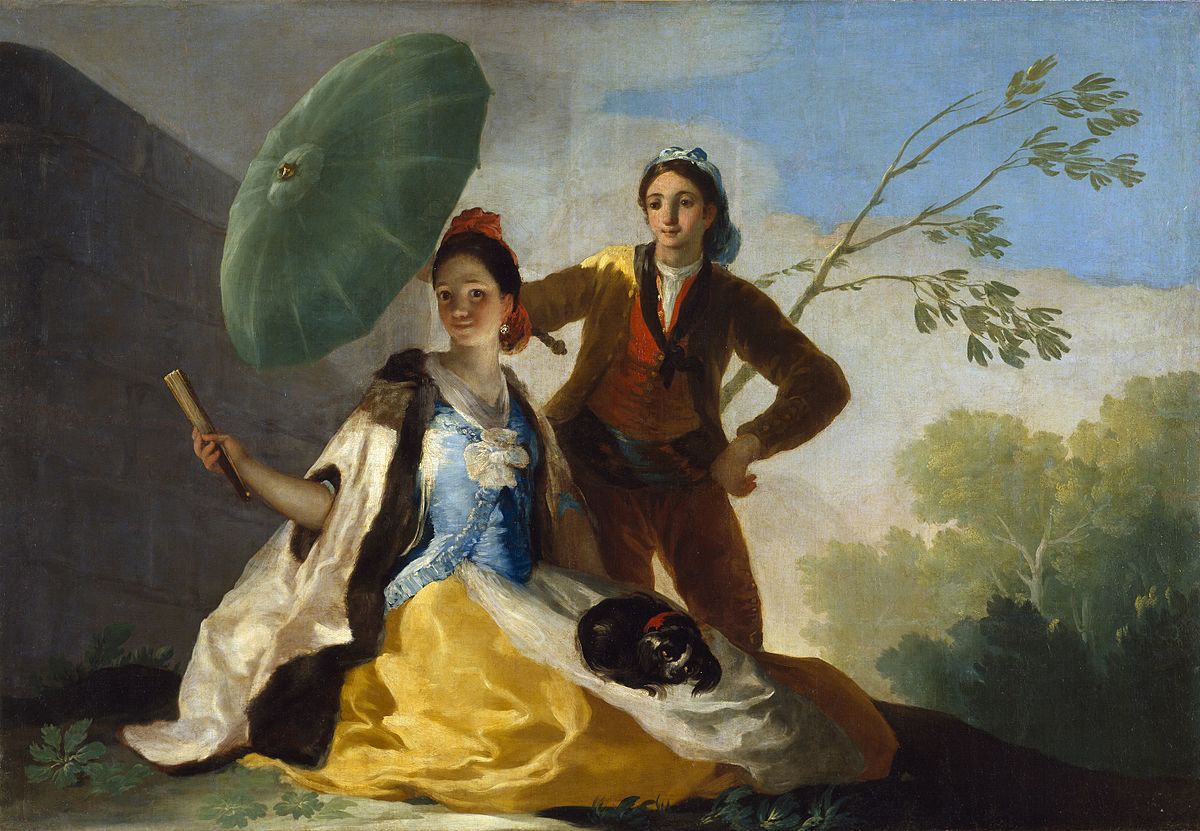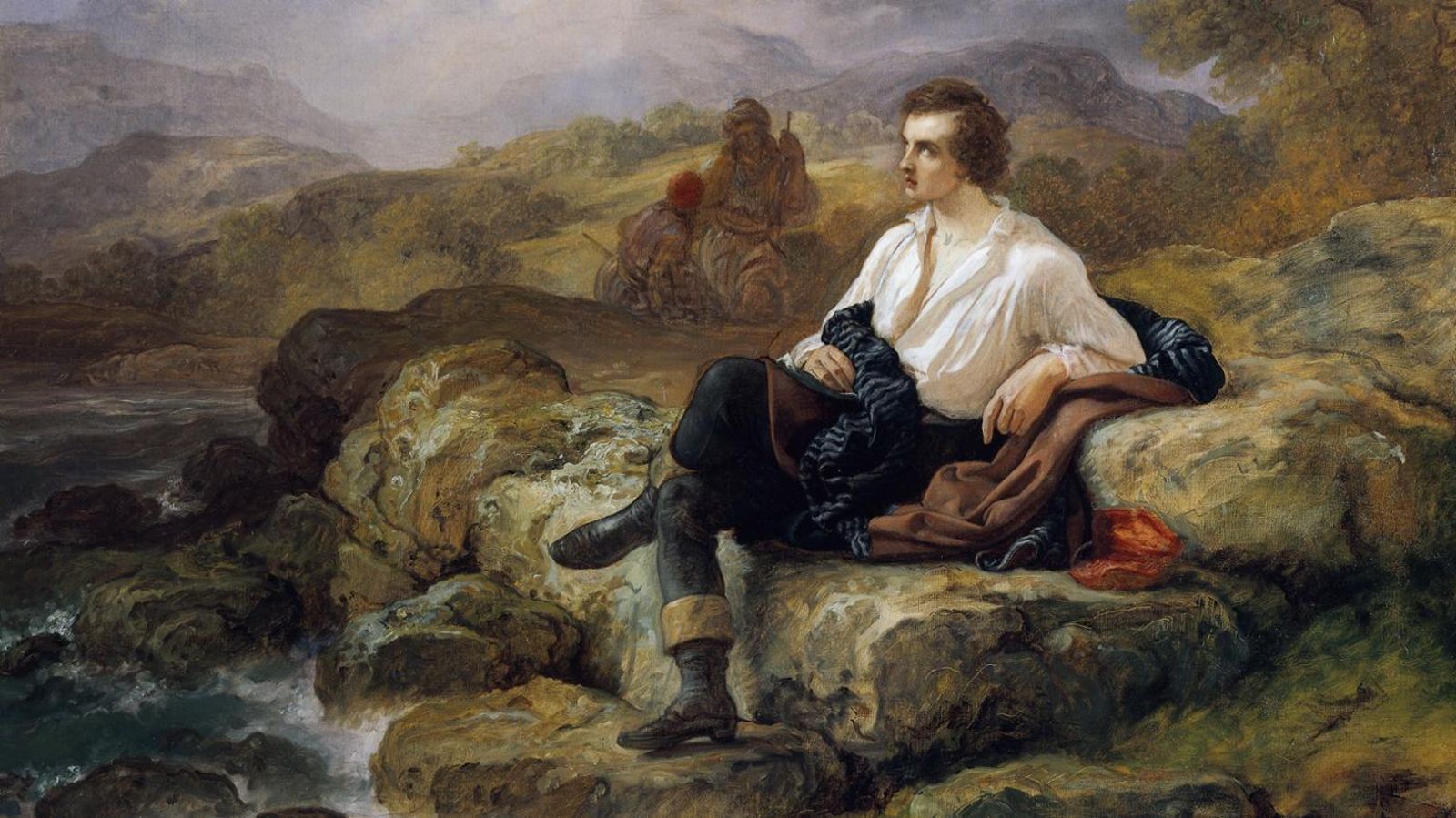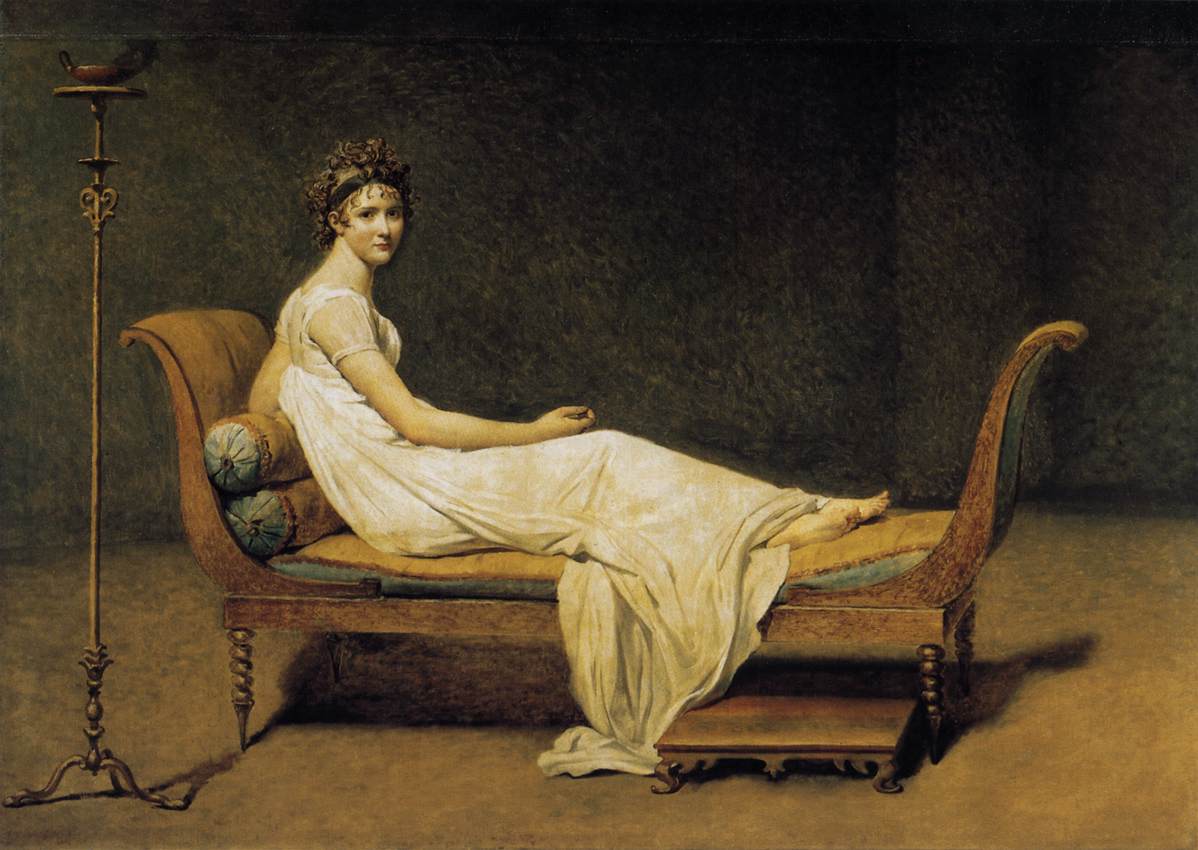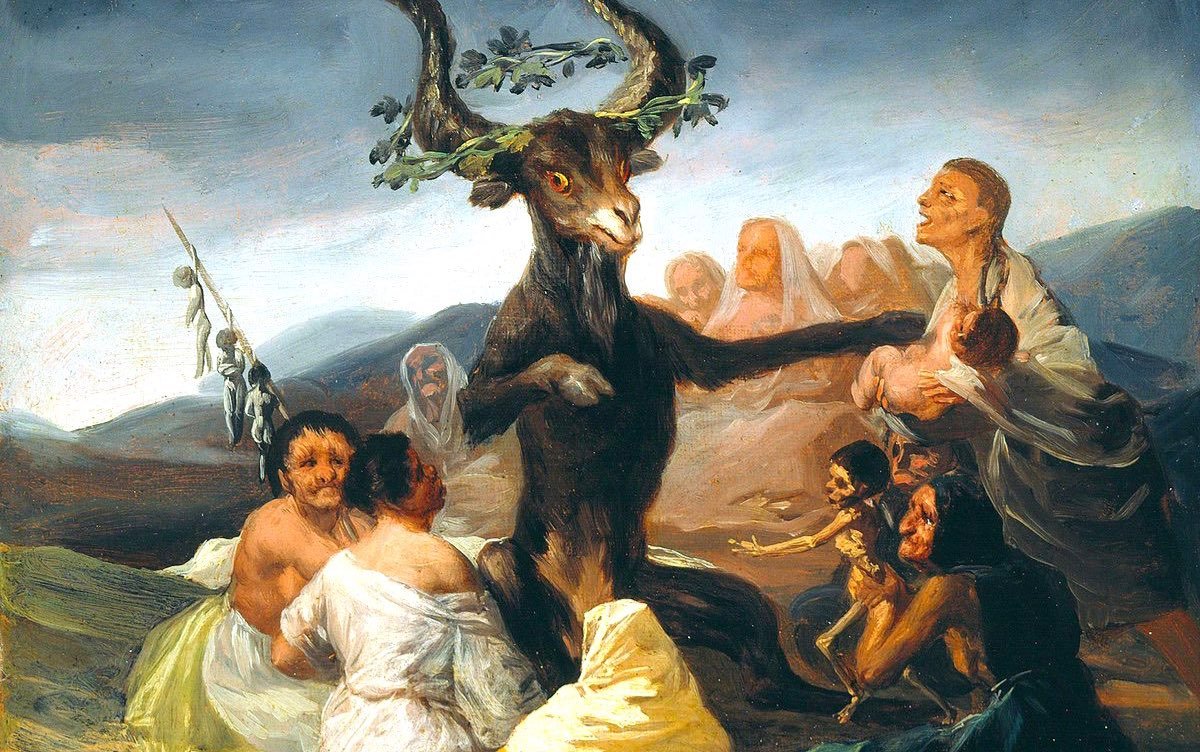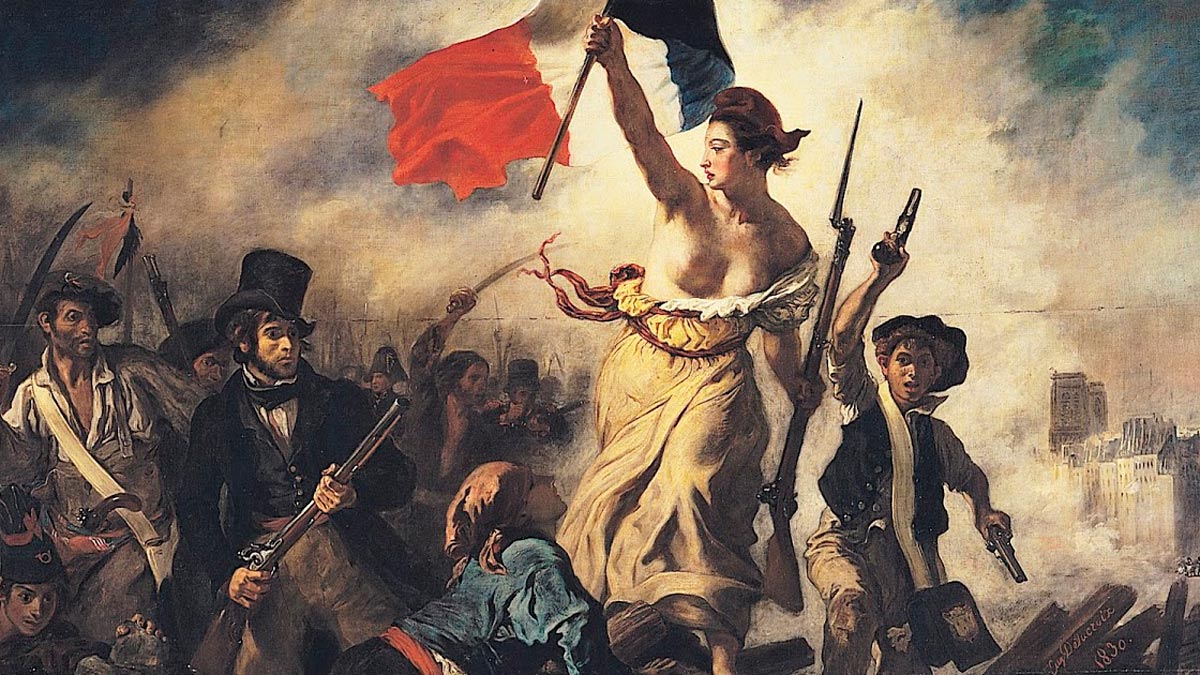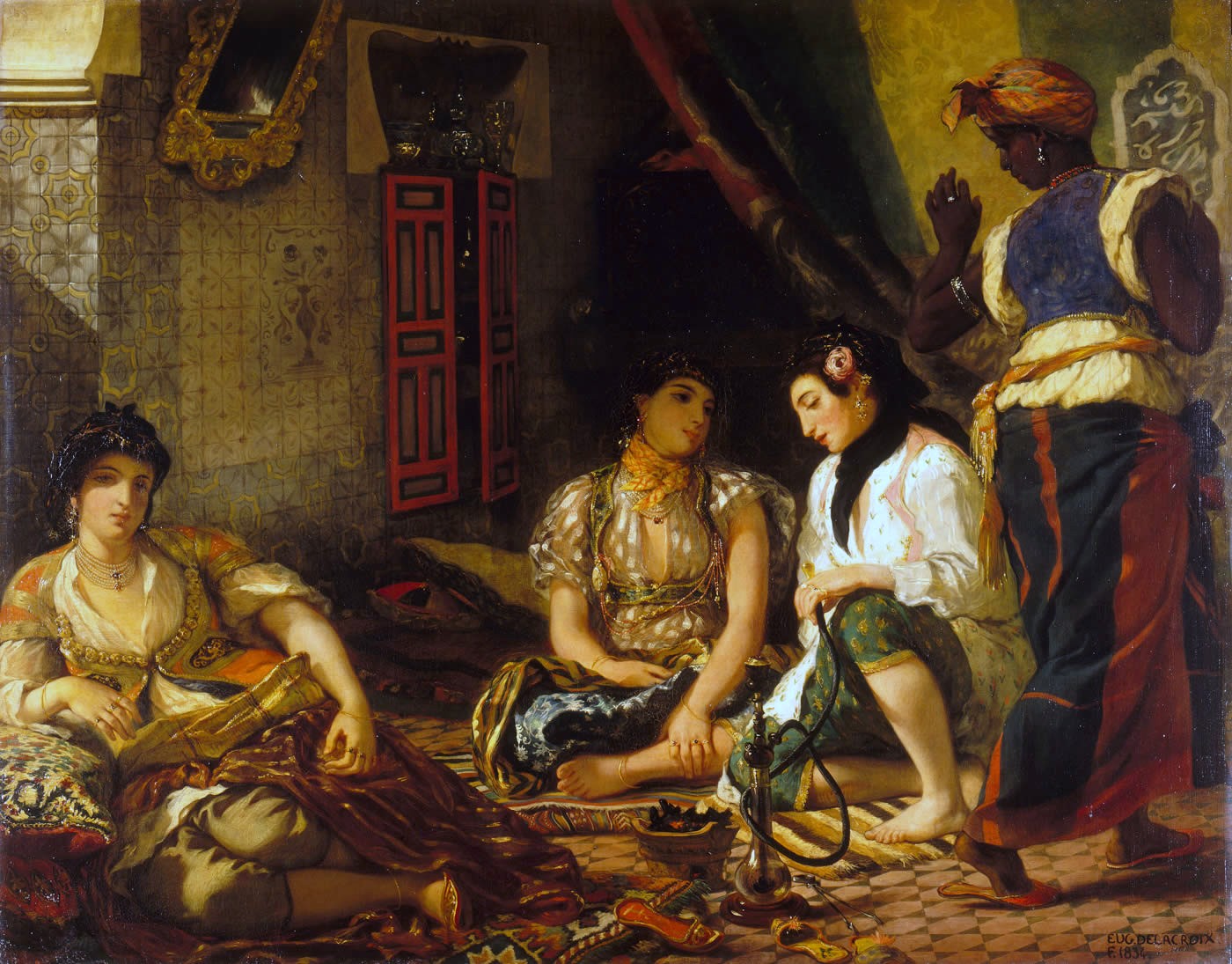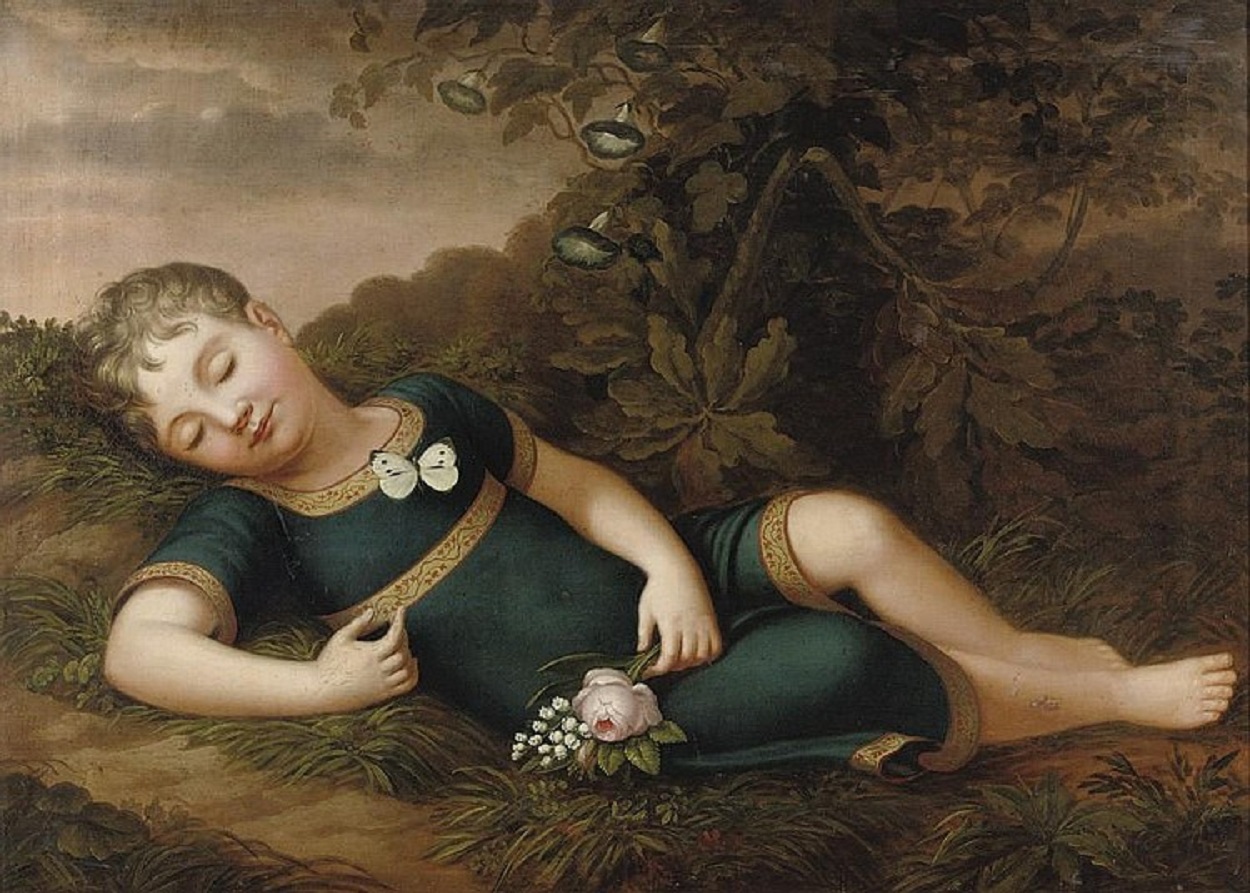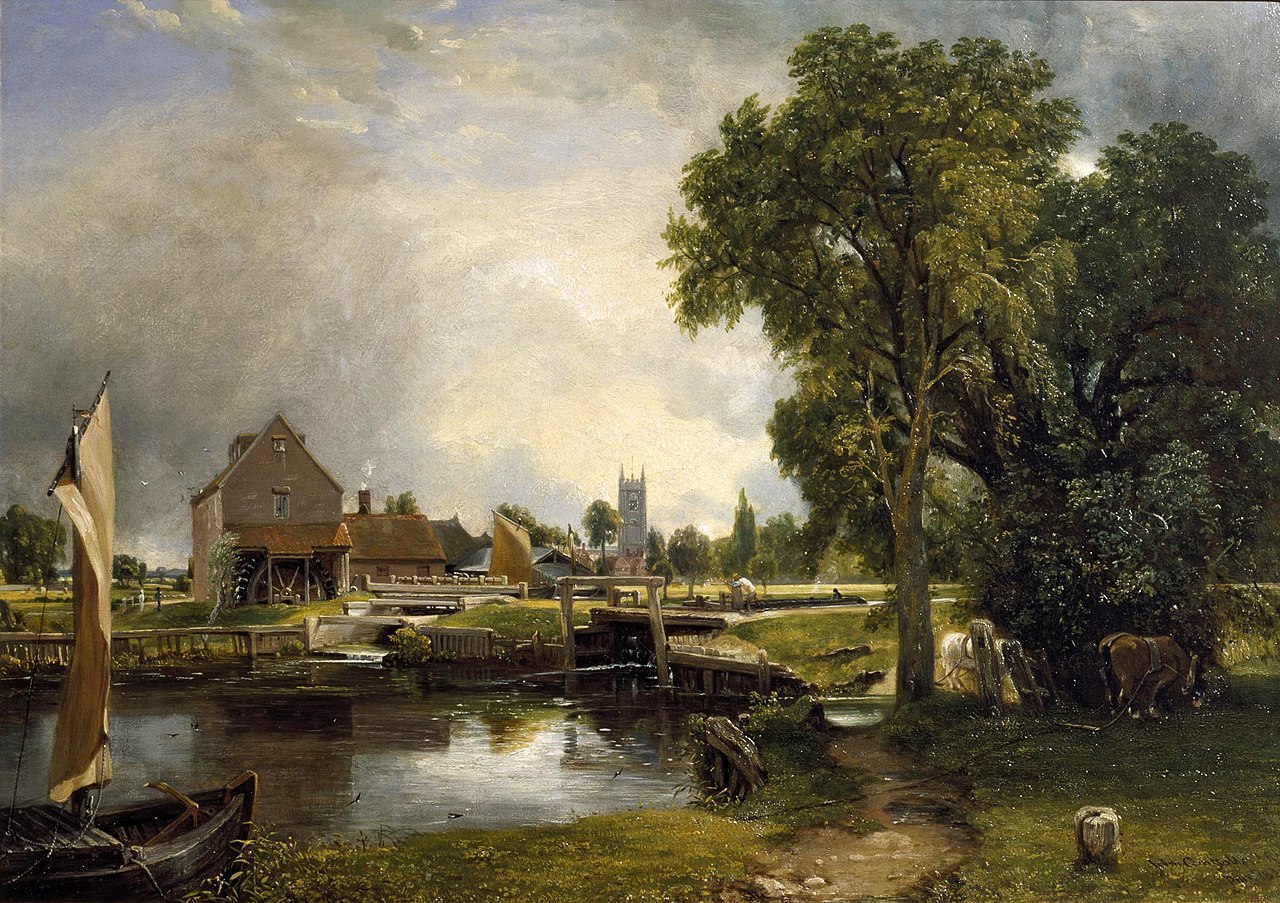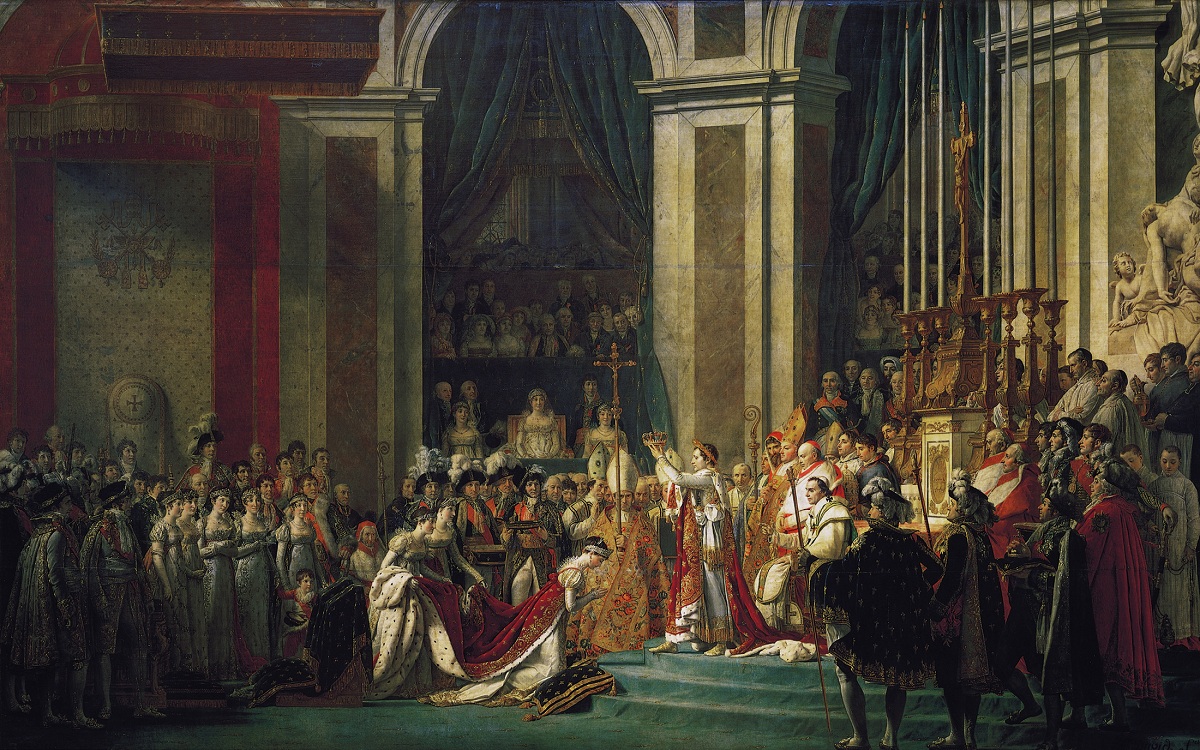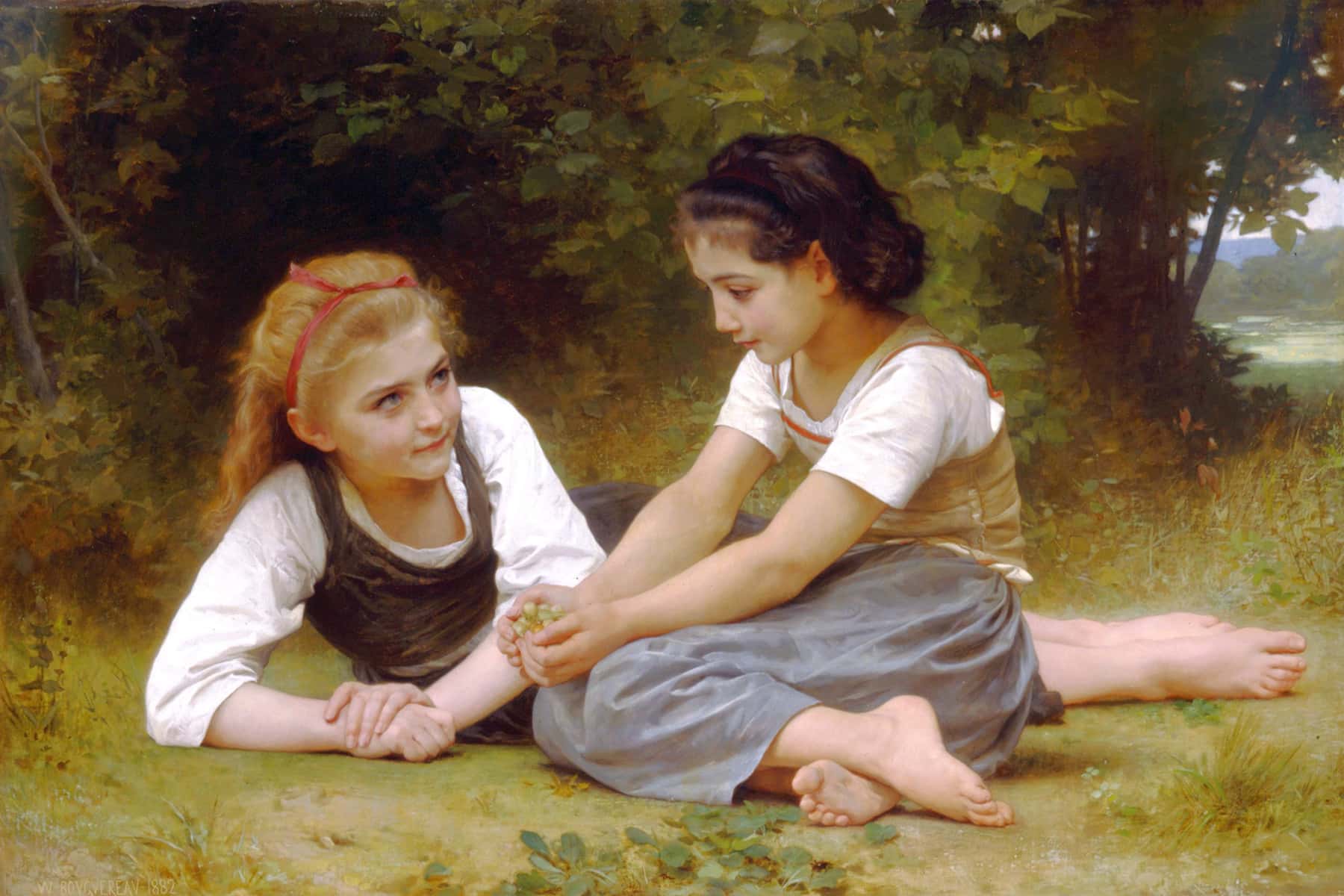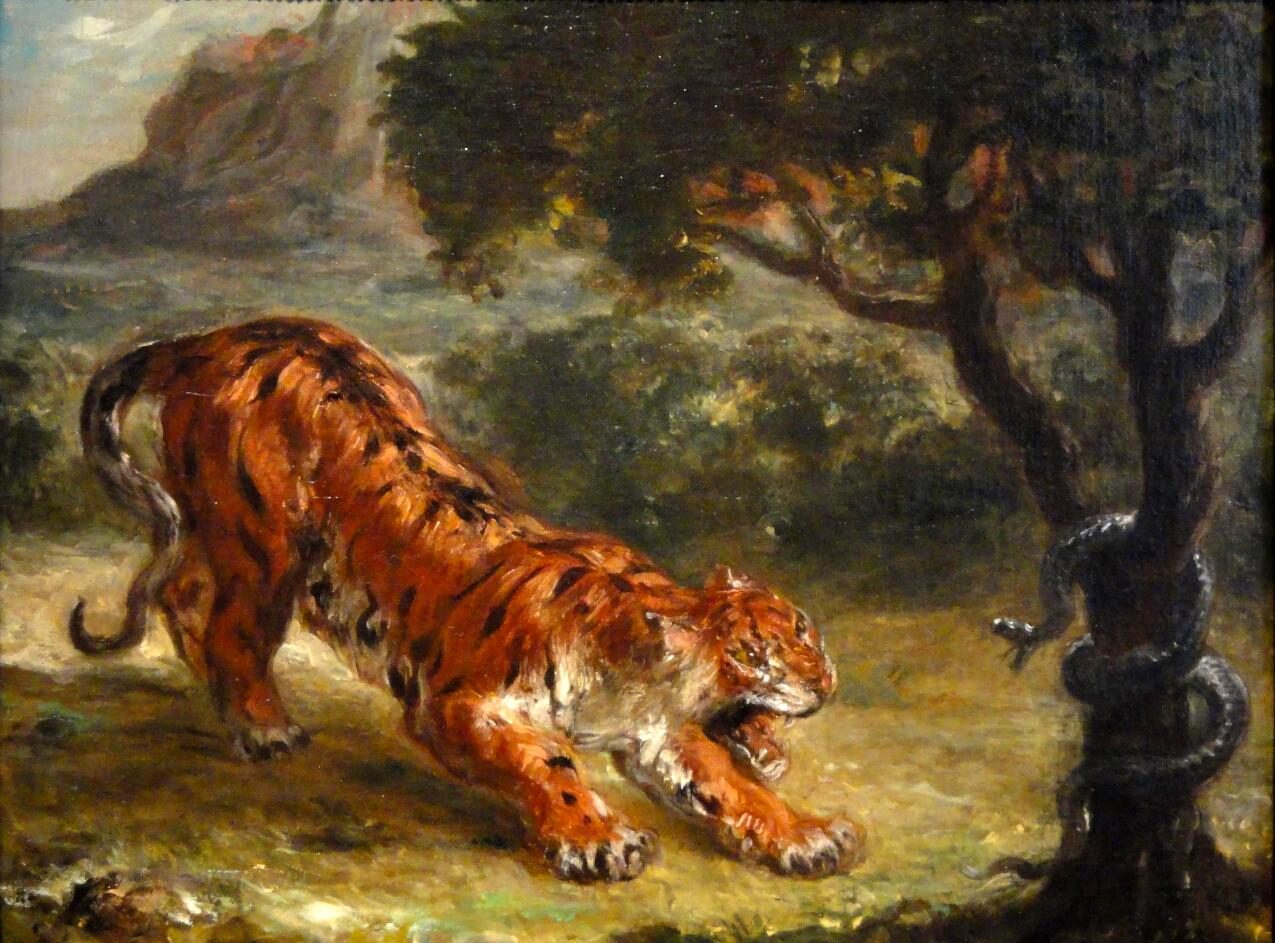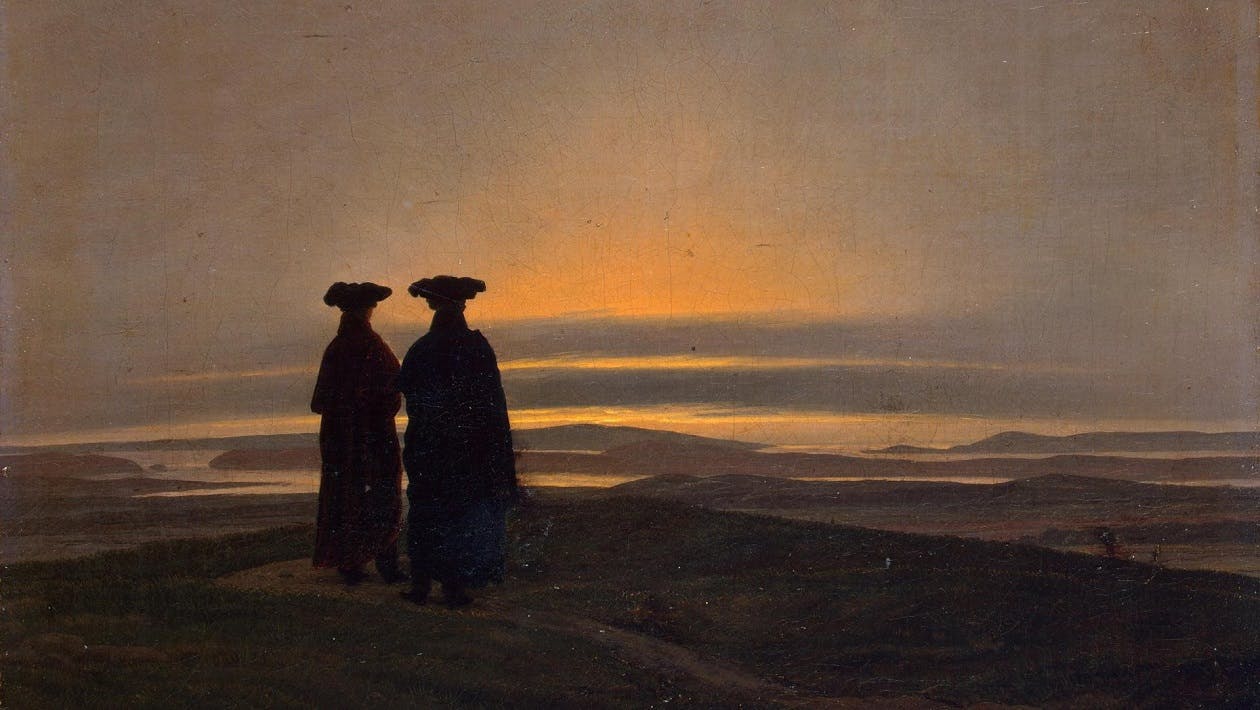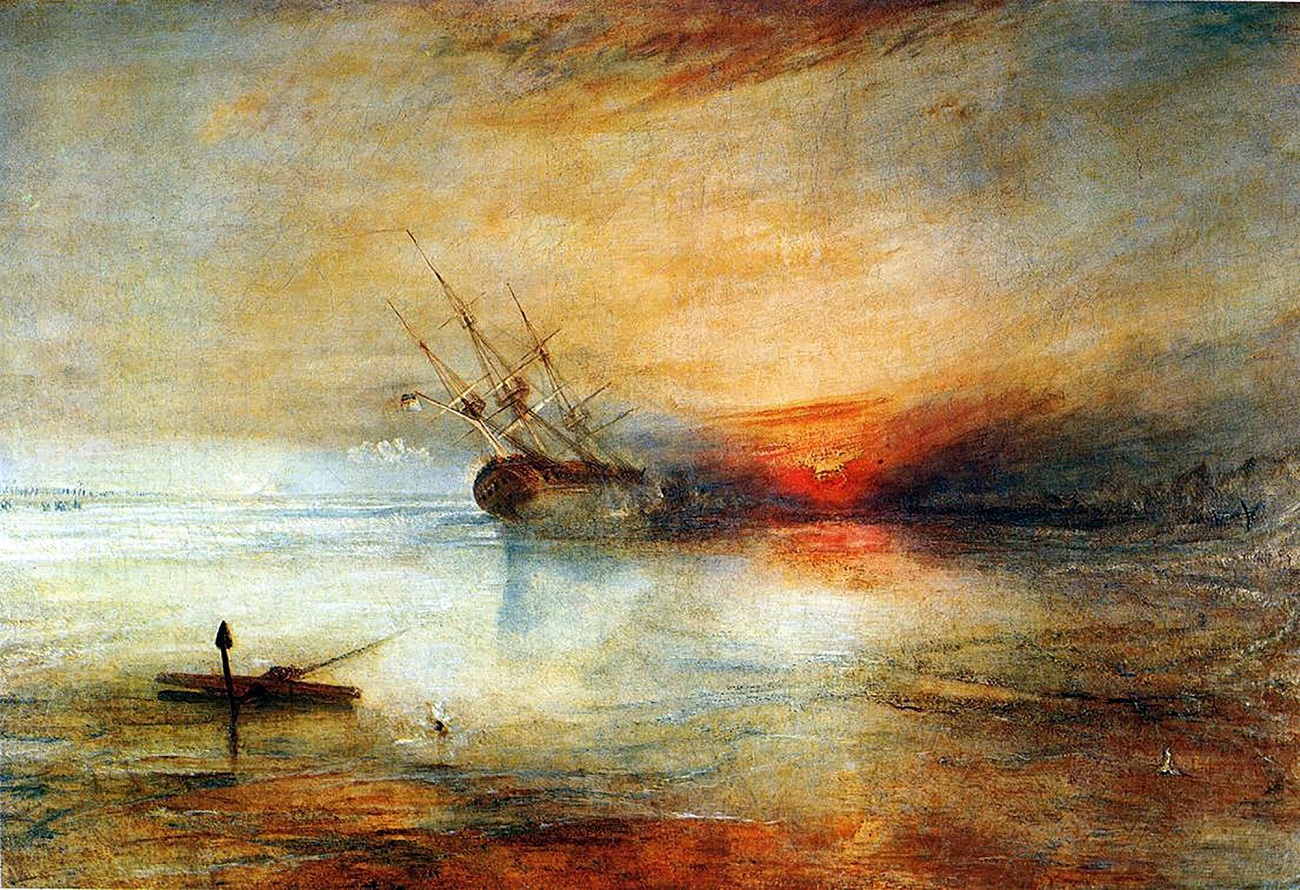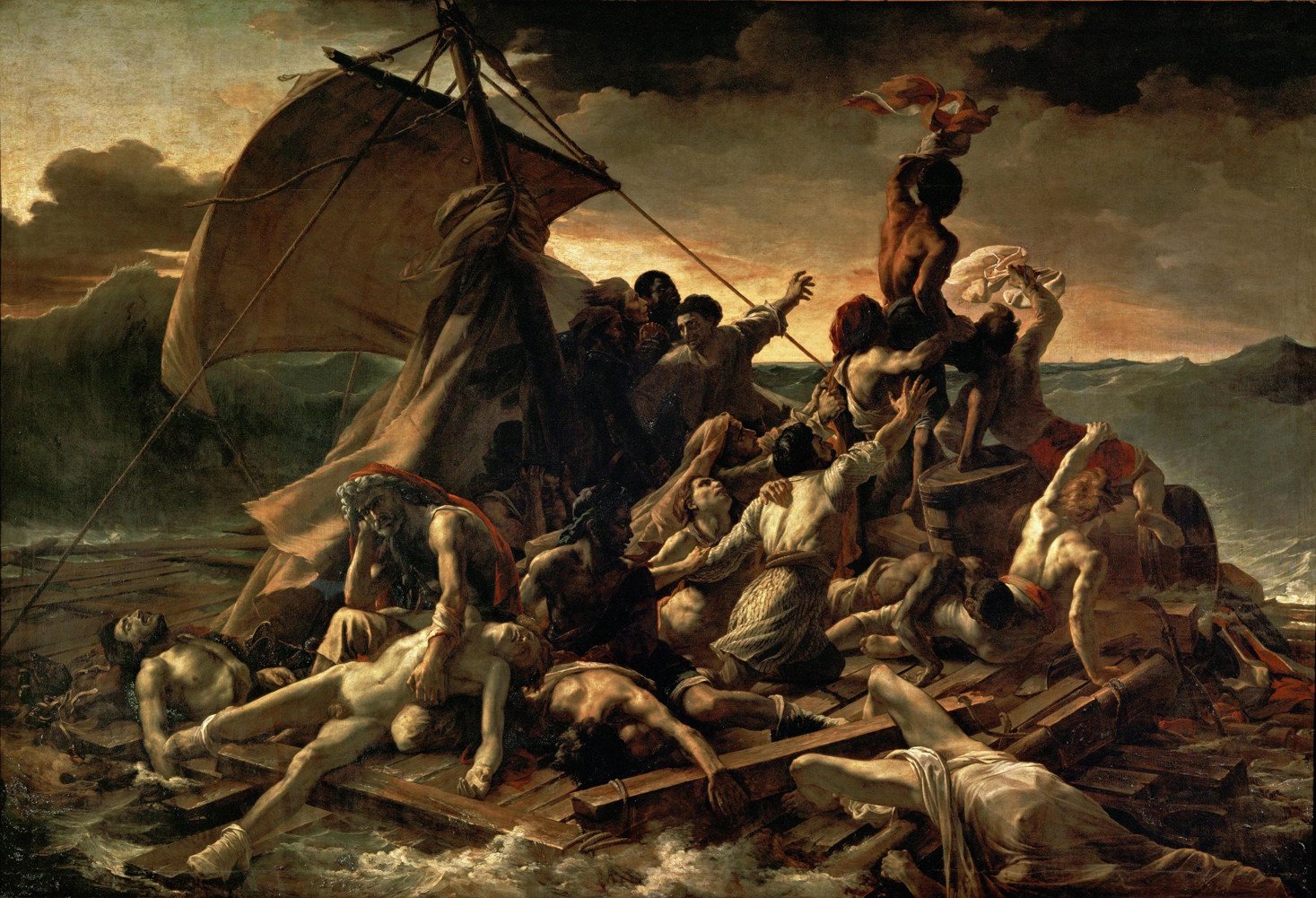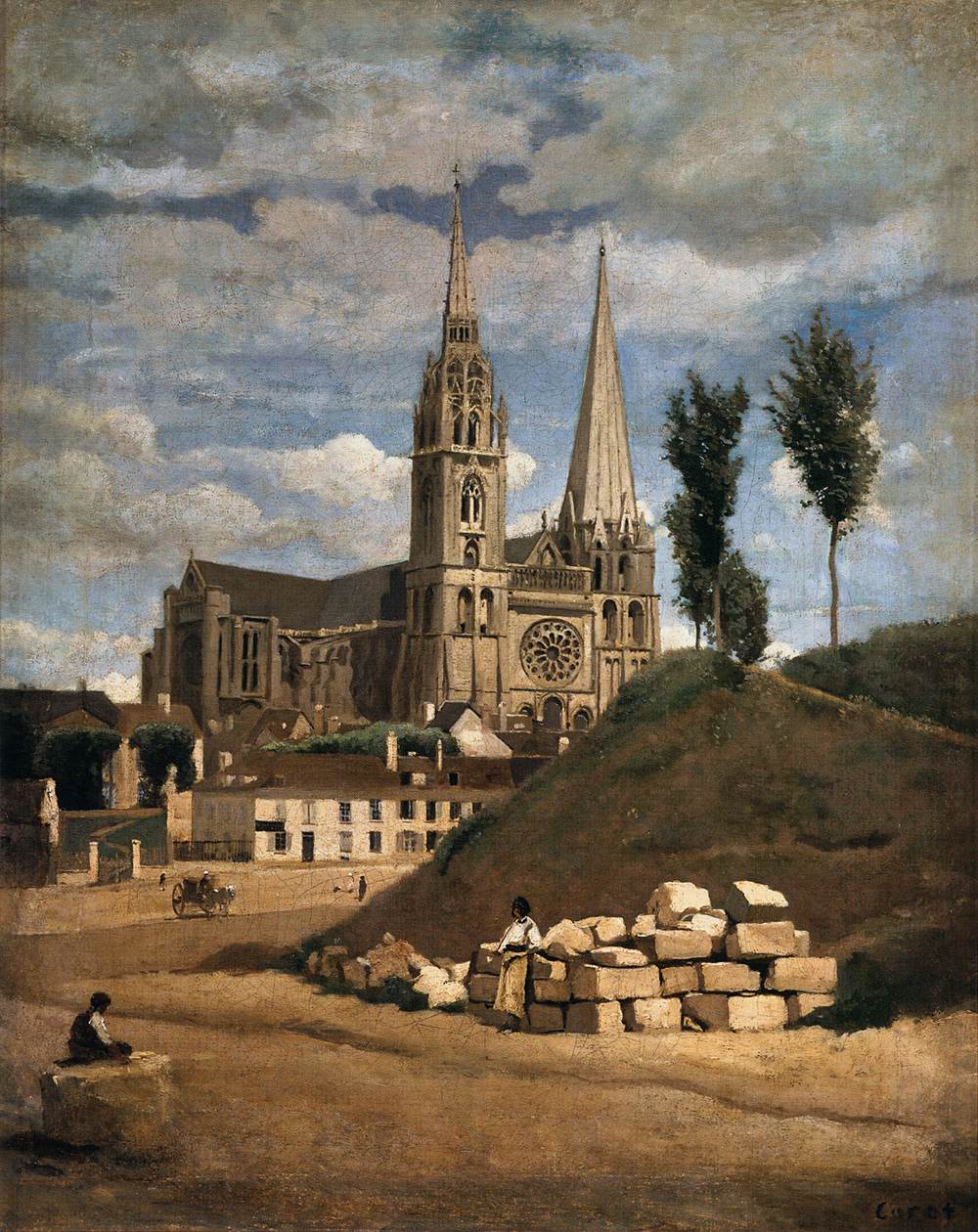The emphasis is on feeling and emotion within the Romanticism painting. There is a lot of room for the artist's intuition and imagination. This sometimes resulted in extraordinary works of art with a poetic atmosphere tinged with sentimentality.

romanticism painting
At the end of the XNUMXth and XNUMXth centuries, European and, including American, culture experienced a birth that was completely different from the period of Enlightenment thought and philosophy - the stage of Romanticism. Gradually infiltrating from Germany into the culture and art of England, France, Russia, and other European countries, Romanticism enriched the art world with new colors, stories, and the audacity of the nude.
General characteristics of Romanticism
Romanticism began as a literary movement in Germany, England, and France. At the end of the XNUMXth century (the century of Reason), people got tired of the rationalist thinking of the Enlightenment and academic classicism, in which they constantly tried to imitate the old classics.
In Romanticism, the artist was no longer an imitator of classical art, but became a creator himself. He worked from a personal feeling. Art became the "personal expression of individual emotion." In this attitude to life in the nineteenth century, the experience of the individual was the starting point. From a negative view of one's own time with industry, rationalism and materialism, the past was seen in an ideal way.
This feeling was considered superior to common sense, because the romantic lived dissatisfied with society: he fled from the here and now to other cultures, to the past, in fairy tales or in nature. With melancholy people wished to go back to the Middle Ages, to the idea that life was still pure and authentic back then.
In the plastic arts, the height of romanticism was between 1820 and 1850. In many European countries there was a revival of interest in the myths, sagas, fairy tales and legends of their own country and in literature that exalts the glorious past. In England, Sir Walter Scott wrote more than thirty historical novels, one of which was Ivanhoe. In France, Victor Hugo wrote Notre Dame de Paris, a medieval story in which Quasimodo, the hunchback, has the main role.
There were the translations of One Thousand and One Nights, a series of oriental stories. The composers were inspired by popular songs, ballads and legends of the past. Franz Schubert composed no less than six hundred romantic Lieder. Ludwig van Beethoven chose nature as the starting point in his Pastoral. In Romanticism harmony was seen in nature, natural laws were an example. The German writer Goethe developed a method of studying nature based on perception.
Goethe was also very influential through his color theory, which took complementary contrasts, especially blue and warm yellow, as its starting point. The melodrama predominated in the romantic ballets and the theater. The more theatrical a performance, with exaggerated costumes and fantastic sets, the more it was appreciated.
Many artists fled with their themes into the past or the future, into exoticism, into fantasy, into "wild," unspoiled nature, or harbored a romantic longing for an impossible love. Romantic artists sometimes literally run away from reality as a longing for death, as liberation from suffering.
All these themes were approached subjectively by the artist, assuming that the individual feeling or idea evokes universal feelings and ideas. The artist was seen as a high priest of the superior or supernatural, as a connoisseur of the sublime. With his imagination, only the artist was able to transform personal feelings into art, an intense experience of inner living.
Even the precursors of romanticism (Johann Heinrich Füssli and Francisco de Goya and the writers of the Sturm und Drang literary movement) referred to feelings as a source of aesthetic experience, although they did not exclude horror and terror, as well as admiration and amazement. , and therefore the co-founder of “Black Romanticism”.
The individual imagination, the sublime and the beauty of nature were discussed as new aesthetic categories. In the second half of the nineteenth century, realism contrasts with romanticism.
History
When we talk about romanticism we are talking about a historical period from 1815 to 1848 in which the whole of society is caught up in a wind that has already been blowing since the end of the XNUMXth century and will continue to blow in the following century and that underlines new social values.
Certainly in the spirit of the eighteenth century it already contained the identifying elements of Romanticism, but from what we obtain from the writings of the time, they were considered negative values, so much so that they were identified as a symptom of mental disorders attributable to "The evil of the century" described quickly by the French physician and philosopher La Mettrie (1709-51) in "De la folie."
Among the great precursors of the romantic movement is Francisco de Goya, who, overcoming the widespread neoclassical ideas, accentuated the figurative taste of the XNUMXth century to obtain a new expressive freedom typical of romanticism, from which he bravely anticipated the darker fantastic motifs.
Romanticism, as a social phenomenon, was initially theorized in Germany, but had wider effects in France, where norms of social behavior were so strong that Romantic artists lived alone, oppressed by a deep sense of discomfort and guilt.
In the painting of romanticism refers to cultural and philosophical trends, it was relevant in America and European states in the eighteenth, nineteenth and twentieth centuries. The genre originated in Germany, initially manifested itself in literature, then passed into painting and spread to England, affected France, Spain, and several other countries in Europe and America.
The era of romanticism falls in the historical period between the French Revolution of 1789 and the European bourgeois-democratic revolutions of 1848, a turning point in the life of the European peoples.
The rapid growth of capitalism undermined the foundations of the feudal system, and everywhere social relations, maintained for centuries, began to collapse. Revolutions and reactions shook Europe, the map was redrawn. In these contradictory conditions, the spiritual renewal of society took place.
Romanticism originally developed (1790s) in philosophy and poetry in Germany, and later (1820s) spread to England, France, and other countries. Romanticism puts at the base of the perception of life the conflict between the ideal and reality, high feelings and everyday life.
The genre of romanticism painting was formed gradually, initially a romantic heroic ideal appeared. Towards the end of the XNUMXth century, the trend began to manifest itself. Main objectives and dogmas: emphasis on spontaneity, faith in the best of people and the search for justice. The style of romanticism is characterized by the predominance of mythological themes, the idealization of past times, the rejection of the dogmas of the past and the rational vision and lyrical images.
Each artist saw the genre of romanticism in painting in his own way, so the theme, style and details are significantly different. The special features of the direction contributed to the opening of several schools, among them: the Norwich School of Landscape Painters, the Barbizon School, etc. Likewise, the style had a certain value in the manifestation of symbolism and aestheticism, and thanks to the contribution of the most influential artists, the Pre-Raphaelite movement was formed.
Romanticism in the visual arts was largely based on the ideas of philosophers and writers. In painting, as in other forms of art, the romantics were attracted to everything unusual, unknown, be it distant countries with their exotic customs and costumes (Delacroix), the world of mystical visions (Blake, Frederick, Pre-Raphaelites) , magic, dreams (Runge) or subconsciousness of the dark depths (Goya, Füssli).
The artistic heritage of the past became a source of inspiration for many artists: the Ancient East, the Middle Ages and the Proto-Renaissance (Nazarene, Pre-Raphaelites). In contrast to classicism, which extolled the clear power of reason, the romantics sang passionate and stormy sentiments that captured the whole person.
The first to respond to the new trends were the portrait and the landscape, which are becoming the favorite genres of romanticism painting.
The flourishing of the portrait genre was associated with the interest of the Romantics in the brilliant human individuality, beauty and richness of their spiritual world. The life of the human spirit prevails in a romantic portrait over the interest in physical beauty, in the sensual plasticity of the image. A romantic portrait (Delacroix, Gericault, Runge, Goya) always reveals the uniqueness of each person, conveys dynamics, intense throbbing of inner life, rebellious passion.
The romantics are also interested in the tragedy of a broken soul: the heroes of the works are often mentally ill people. The romantics think that the landscape is the embodiment of the soul of the universe; nature, like the human soul, appears dynamic, constantly changing.
The ordered and ennobled landscapes characteristic of classicism were replaced by images of spontaneous, recalcitrant, powerful, ever-changing nature, corresponding to the confusion of feelings of romantic heroes.
Characteristics and trends
During a good part of the XNUMXth century, the neoclassical current dominated painting, mainly inspired by dictates of order, balance, rationality, and clarity. For the painters of the time, the subject represented acquires a fundamental importance, which is usually cataloged according to criteria of relevance and less and less minor genres.
However, in the middle of the romantic period, we witness the distortion of everything that has affected the neoclassical artistic dictates for the benefit of completely new trends. In fact, painting becomes a fertile ground for the irrational, for feelings, for passion, for energy, the absolute and mystery.
In particular, the painter stops playing a pre-established social role linked to certain artistic protocols and becomes a simple and common bourgeois like many who intend to make creativity and imagination their own artistic figure.
That is to say, the painter begins to point to individualism, to the spontaneous and free expression of his own creative genius. In this perspective, therefore, all rules and conventions are absolutely prohibited at the stage of creation to give free rein to the subjectivity of the painter.
However, in the romantic era, not only the pictorial rules changed, but also the artistic purpose. If in full neoclassicism, in fact, every work is the mouthpiece of a didactic purpose, of an educational purpose, in the romantic period (as we have stressed before) the work of art is a mere expression of the painter's interiority that no longer points to imitation of the surrounding nature but to the representation of the conflict with society, of the ego against nature outside of itself.
From this point of view, the pictorial subject stops playing a preponderant role because what really transmits the artistic message becomes the chosen way of portraying. In England, for example, Romantic painting was mainly landscape, but lacked ennobling detail.
The landscape is represented as it appears, without frills or conventions as in Constable's paintings or full of drama, with a powerful evocative force, as in Turner's works, in which elements of modernity are also included, such as the train, the machine, fast but inserted in blurred, dynamic, tense contexts.
In Germany, on the other hand, painting turns its gaze towards more philosophical and religious objectives, as in the paintings by Caspar David Friedrich, for example, in which the romantic theme makes its way by focusing on the anguish of man, loneliness , the melancholy expressed thanks to the use of a naked and symbolic nature.
In France, the painting of romanticism gains strength, it is full of violence, struggle, dramatic tension, all elements developed by Géricault in the painting "The Raft of Medusa", in which a shipwreck is staged during one of the most dramatic moments.
The spirit of romanticism painting
The romantic spirit rejects academic discipline in favor of a regenerative return to something older and freer, more personal and exotic. The discovery of Herculaneum and Pompeii in the XNUMXth century had awakened in artists a feeling of nostalgia for the past that led them to rediscover and reappropriate new and old forms of expression.
The Mediterranean plastic ideal, embodied by the Greek or Roman hero, was gradually replaced by a taste for the Nordic, Germanic, English, Scandinavian and Scottish civilizations. Painting is the figurative art par excellence of Romanticism and acquires highly diversified facets depending on the territory in which it was developed.
nationalist sentiments
The French Revolution, which grew out of the Enlightenment, was the background of Romanticism. Born of the Enlightenment ideal, 'liberty, equality and brotherhood' also provided a basis for heroic and chauvinistic emotions. Romanticism triggered nationalist sentiments, in which the country, language and history and traditional norms and values were glorified.
In the process of nation and state formation in the XNUMXth century, nationalism also emerged as a political ideology. The content of the artworks compared these nationalist sentiments to the historical or fictional mythological past. The artistic highlights of that national past also received much attention in museums.
Although Romantic painters often go back in time, Eugène Delacroix portrayed the revolution of 1830 that same year. The revolutionaries are led by Marianne, the national symbol of France.
As an allegory of freedom, he has the French flag and a rifle in his hand. Delacroix has not given the painting a layer of varnish, so the dusty textures and dust vapors are matte on the canvas. The lack of a shiny layer makes the performance more realistic.
Despite the struggle of artists to determine the content of their work themselves, a demand for work in a classical style also persisted. Despite the French Revolution, academic painters could still make a living painting mythological and religious images. During the French Revolution, the churches suffered, but almost all French regimes maintained links with the church afterward.
Nor did they want to hurt the religious sentiments of the majority of the population. Traditional and conservative fine painters such as Delaroche, Lourens Alma Tadema, and Bouguereau responded to the demand for religious and mythological paintings in the academic tradition.
Exotic places
The nineteenth century was the century of expansion. What at first seemed distant came closer thanks to the train and the steamships. World exhibitions showcased art and industry from "foreign" continents. Colonialism brought the exotic and "primitive" worlds to Europe. Orientalism and exoticism in art arose from colonialism and world fairs.
Academic paintings by Lawrence Alma-Tadema such as "The Death of the Firstborn" were fascinated by the exotic subject matter of the depiction. Alma-Tadema worked in the traditional classical style, but his performances fed the romantic and exotic imagination. Artists made many studies and sketches on their travels, previously seen as insignificant preliminary studies.
In Romanticism painting, the sketch became a spontaneous expression of art, in which the artist's personal calligraphy was visible.
The warrior spirit, which grew with the imperial ambitions of Napoleon, prevailed in the consciousness of many artists. The movement of armies led to exchanges between different civilizations, deepening mutual knowledge, the characteristic styles of each country were appreciated.
The Napoleonic campaigns in the Middle East aroused interest in the Arab and Jewish civilizations, and painters such as Gross and Auguste began to collect oriental objects, jewelery and carpets, which passed into pictorial language thanks to Ingres, Delacroix and Chassériau
Romantic painting in different countries
The depth of their own experiences and personal thoughts is what the painters transmit through their artistic image, which is made from color, composition and accents. Different European countries had their own peculiarities in the interpretation of romanticism painting. All this is related to the philosophical current, as well as to the socio-political situation, to which art was the only living response. Painting was no exception.
Figurative painting in romanticism acquires highly diversified facets depending on the territory in which it develops. Among the great precursors of the romantic movement was Francisco Goya in Spain. In France and England, interest in the recent national past resurfaced, which favored a change in the design of decorations and accessories, until the creation of the “Troubadour Style”.
This taste arose as early as 1770, favored in France by the series of statues commissioned by the Count d'Angiviller, commemorating illustrious Frenchmen. Milton's poems and the rediscovery of Shakespeare's plays played the same role in stimulating a return to past glories.
German romanticism in painting
On the territory of Germany, the style manifested itself earlier, artists strove to idealize the past - the Middle Ages. The works were often contemplative and passive, adhering to romanticism specializing in landscapes and portraits. Among others, Otto Runge highlighted, his canvases combine the tension of inner life while maintaining calm in external manifestations.
Runge drew wildlife scenes using vivid colors, while otherworldly creatures were often present. He actively studied information on color rendering, wrote treatises on this topic, divided the spectrum into parts, and was able to achieve great success in the transmission of colors and light. On his fantastic canvases, he was able to achieve a feeling of space and air.
The painting of the full romanticism of the XNUMXth and XNUMXth centuries was reflected in the work of Caspar David Friedrich, who specialized in landscape-style works. He chose the mountains of southern Germany as the main theme of his creativity. The talent of the artist allowed him to convey the charm of the area, combined with the melancholy transparency of the sea coast. He often painted landscapes under moderate moonlight.
The mythological theme was close to many artists, in particular, the predominance of romanticism in Carstens's painting is noted.
He created drawings that accompany various books, painted royal residences. Already during his work in Rome, he actively wrote in the direction, often combining it with neoclassicism. The artist managed to reflect hidden feelings, drama. In many ways, the direction of local artists in Germany's romanticism painting contributed to the further spread of the style, reflecting more the inner perception than the real essence of things.
One branch is the genre of romanticism in painting called Biedermeier, reflected in chamber works, usually everyday scenes. The style was typical of German and Austrian romanticism painting, in the drawings preference was given to idyllic scenes. The style was represented by Ludwig Richter, GF Kersting, Ferdinand Waldmüller and other artists.
English romanticism in painting
In England three artistic currents were distinguished: the oneiric visionary current, the current of the sublime and the picturesque current. The maximum exponents of each one of them were respectively William Blake, William Turner and John Constable. The visionary poet William Blake drew his pictorial works from the images created by his poetry, closely linked to Christianity.
John Constable was the first to renew with his colors the joyful and free feeling of nature, inaugurated in the previous century by Jean Honorè Fragonard, but abandoned in the neoclassical era, sublimating it. The feeling of history and the pleasure of illustrating the picturesque is felt in England, an example is the work Blizzard, in which William Turner represents Hannibal with his soldiers crossing the Alps.
While Thomas Gainsborough had time to discover the mysterious magic of colors with their almost schematic, fluid, indeterminate touches with respect to academicism and the use of a personal fluid and brilliant mixture.
On the territory of England, the style also perfectly took root, the painting of English romanticism is most noticeable in the works of Johann Heinrich Füssli. He favored graphics and painting, keeping romanticism in its foundations. He managed to combine the idealization of the image in the classical form with fantastic plots.
The artist showed human fears, including the fear of evil spirits that supposedly strangle people in their sleep. Although the artist was born in Switzerland, he spent most of his life in England.
Thanks to his vision of romanticism in England, the painting acquired a mystical character. Fantastic visions and nightmares that are characteristic of millions of people look at us from the canvases. For a long time, the issue was unspoken and thanks to Füssli they were able to debate at a public level. He combined fairy tales, folklore and hallucinations.
Also, the essence of romanticism in European painting was revealed by William Turner, he became famous for the transmission of light to air and the reflection of shadows. A feature is a phantasmagoria, it showed hurricanes, storms, disasters. Gradually, dark shades disappeared from the artist's works, and the main place in them was assigned to lighting and air. It reflected movement, nuances and special lighting.
A well-known representative of European romanticism painting was William Blake, some of his works were influenced by the in-depth study of the Bible, but art attracted the artist from childhood. He worked in tempera and watercolors, claiming that visions of him come to him. Seeing incredible things, he reflected the essence of himself in his works, believing that all artists work in this way.
William Blake became successful only in the last ten years of his life, when he found like-minded people and began to sell his works profitably. The art is dominated by female images, deities, various animals, and non-standard subjects.
John Constable had a style of painting in relief, he formed the texture with thick strokes, often avoiding detail. He painted portraits for his own support, and considered landscape painting his calling, learning the beauty of nature and the laws of color before popularizing the direction among the Impressionists.
The artist preferred to paint English beauties, forming many sketches in order to get even more composition. Often the sketches had special expression and energy, but in the end they were not reflected in the finished work.
Very often the scenery was painted with a mystical bias. Although the essence of the work is transmitted in the style of romanticism, he sought to show atmospheric effects, among them he was able to draw the high humidity, the movement of the environment. Among other things, broken lines were used for it, touches with a brush with light paint to give the effect of brightness.
Constable showed the fury of the elements, often represented with rainbows, beautiful buildings, including cathedrals. He knew how to add details in such a way that he achieved a special game of nuances, to form lightness and draw attention to the canvases.
French romanticism in painting
In France, romanticism in painting developed according to different principles. Stormy social life as well as revolutionary upheavals are manifested in painting by painters' gravitation to depict hallucinatory and historical subjects, also with nervous excitement and pathos, which were achieved by dazzling color contrast, some chaos, expression of movements. , as well as spontaneous compositions.
The first signs of a change in style can be seen in France during the 1810s. During Napoleon's reign, Jacques-Louis David shaped academic painting with state portraits and history paintings.
The history painting now beginning shows idealized, mostly small-format compositions from the Middle Ages and the Renaissance, referred to as the troubadour style. The content is usually intimate and anecdotal, but there are also very dramatic scenes.
The lives of revered artists such as Raphael or Leonardo da Vinci, as well as those of rulers or fictional characters, are reconstructed. Théodore Géricault, Eugène Delacroix, Ingres, Richard Parkes Bonington, Paul Delaroche are the most important romantic painting artists in France.
The important French author, Victor Hugo, devoted himself to drawing while writing, literally "between two verses." His somber landscapes in sepia (dark brown ink) and black ink reflect the atmosphere of his novels without referring to them in terms of motif. The romantic can be found mainly in the themes: gothic castles, decaying ruins, wild nature, roaring sea with ships, etc. André Bretón already appreciated Hugo's work with the unexpected, his search for the mysterious.
William Bouguereau initially chose mythological themes and genre pieces, later mainly religious themes. He had a virtuoso style with which he managed to beautifully reproduce the sensuality of skin and textures. Although his style is very academic, with the shapes and clear lines and colors of neoclassicism, many depictions are in keeping with the sentiment of romanticism painting.
His work also illustrates the escape from reality, the escapism of the XNUMXth century. The mysticism, contemplation, and drama in his work of depictions of saints and mythological figures appealed to many people, including the ladies and gentlemen portrayed by the Pre-Raphaelites in response to rapid changes in society. Painters like Dante Gabriel Rossetti did not want to herald a pictorial revolution either.
For the French, romanticism also means the meaning of modern life and the effort to understand and illustrate today. Classicism is thus abandoned, Eugene Delacroix is the leader of French romantic painting: his famous painting "Liberty Leading the People" is considered the first part of a political nature in the history of modern art.
the troubadour style
The style can be considered an aspect of Romanticism, a painterly version of Walter Scott's poems and novels, and has been described as a "style within the style". Popular especially in France, the painters of this current represent scenes inspired by the Middle Ages and the Renaissance, with colorful clothes, love affairs and chivalric exploits.
Troubadour style paintings are generally small in size, with an emphasis on detail. Many important artists have confronted this style, for example Jean-Auguste-Dominique Ingres in The Death of Leonardo da Vinci (1818, Petit Palais, Paris).
Romantic painting artists
Romanticism was fully expressed in painting. Seen internationally, some typical pictorial icons of the 'romantic age' 1790-1850 were: the German painter Caspar David Friedrich, the Englishman John Constable and the French painter Eugène Delacroix. Their differences between them show how diverse the Romanticism movement really was.
Eugene Delacroix 1798–1863
Delacroix left an extensive body of work, he made hundreds of paintings, watercolours, murals, drawings, lithographs and engravings. In doing so, he often chose representations with emotional or dramatic content, depicting historical, mythological, and literary events. He managed to dramatize his performances with strong light-dark contrasts. Unlike the academic painters of neoclassicism, Delacroix focused not on "cool" shapes and lines, but on color and atmosphere.
Although Delacroix's compositions are thought out in detail, the effect of color was important to him, he discussed it with Constable and Turner. On his trips to Morocco, among others, he made numerous sketches and watercolors.
Delacroix also chose exotic themes, mainly inspired by his travels to North Africa. In 1824 he caused a sensation with his four meter high painting The Chios Massacre. The subtitle was: Scene of a mass murder in Chios; Greek families awaiting death or slavery.
In it he portrayed a horrible massacre that had taken place on the island of Chios two years earlier. Furthermore, fifty thousand Greeks were killed by the Ottoman Turks and as many were taken as slaves. Delacroix, who was well acquainted with Géricault's Raft of the Medusa because he had been a model for it, similarly constructed the composition with figures stacked in triangles. Because of this painting, Delacroix was quickly seen as the most important painter of the Romantic era.
In 1827 Delacroix exhibited the historical piece The Death of Sardanapalus, the story of an ancient Assyrian monarch. After his palace was besieged, this sultan is said to have had his harem and his horses killed and his belongings burned before committing suicide. The painting depicts the dramatic executions of those who would not drink poison, with a deep complementary contrast between the warm red and the dark shadows from which smoke is already rising.
Théodore Gericault 1791–1824
In Géricault, too, the austere line and form, so characteristic of the neoclassicals, vanished. She dealt with questions of life through historical themes, but also looked at everyday reality. Géricault's most famous canvas, The Raft of the Medusa, is based on a true story.
Géricault has highlighted the most dramatic moment in this: at the moment when the raft is about to sink and almost all the people aboard the Medusa have died, some discover a ship on the horizon. That's the ship that saved these survivors.
Francisco Goya 1746–1828
As a court painter, Goya painted portraits of the Spanish royal family. Goya had lived through much poverty in his youth, and to the keen observer one can see from these portraits that he still harbored suspicions of the aristocracy. He also displayed the fear of war, oppression and violence in horrifying prints and paintings.
The Spanish people rebelled after 1808 against Napoleon's French troops, who committed terrible atrocities during the occupation. Violent chaos ensued in Spain. These terrible events determined Goya's work until 1815. The most famous work from this period is May 3, 1808, which shows the execution of civilians.
Goya also aptly portrayed despair in the series of black paintings. In the last years of his life, fantasy played an important role, the dark fantasy images of him represent the depraved side of man. Goya occupies a special place, as a courtier and portrait painter he had to adapt somewhat to the elite, but he also recorded his distaste for the man's behaviour. Goya's work, therefore, linked to the late baroque, but also announced the painting of romanticism.
Dante Gabriel Rossetti 1828-1882
In 1848, several English artists founded the Pre-Raphaelite Brotherhood. One of the artists in this group was Dante Gabriel Rossetti. They wanted to return to nature and distance themselves from academic art. Early Italian painting before Raphael (pre-Raphael) was the inspiration for his painting. Think of painters like Botticelli, Titian and Giorgione.
The goal of the Pre-Raphaelites was to create a better world by stopping the ongoing mechanization that was engulfing Victorian England. Religious and social elements played an important role in his work.
Caspar David Friedrich 1774-1840
Caspar David Friedrich was, in painting, the most important interpreter of the German romantic spirit. In his works, the painter expresses loneliness, melancholy, the anguish of man in the face of an arcane and symbolic nature, which does not reveal the secret of death. Nature is represented by Friedrich in all its infinity, as if to express the feeling of impotence of man, a finite being, in the face of nature, an infinite manifestation.
The adjective often used to explain German Romanticism resides in the term Sehnsucht, which can be translated as "desire of desire" or "evil of desire", a feeling of continual restlessness and poignant tension, a feeling that afflicts the subject and he pushes to go beyond the limits of earthly reality, oppressive and suffocating, to take refuge inside or in a dimension that goes beyond space-time.
Francesco Hayes 1791-1882
In Italy, the greatest representative of romantic painting was the Venetian Francesco Hayez, a well-known portraitist and the main interpreter of history painting in Italy. The historical theme was for Hayez the means to convey the facts and aspirations of the Risorgimento.
Unlike Delacroix, who depicted current political events in his homeland, Hayez drew his themes from episodes in past (particularly medieval) Italian history, to which he attributed the value of present-day metaphors. His work Il bacio is considered the manifesto of Italian romantic art.
Joseph MallordWilliam Turner 1775-1851
The Englishman Joseph Mallord William Turner is one of the most original artists of modern times. Turner began coloring stitches and studied at the Royal Academy in London beginning in 1789. Initially, he was interested in landscape painting.
During his travels in England and Wales, he made drawings and watercolors of old castles, cathedrals and coastal landscapes. He created the first oil paintings of him in 1796. In the following years he created landscapes and seascapes, often augmented by mythological figures and dramatic motifs.
Turner's landscape paintings are a prelude to Impressionism, Expressionism, and Informalism. He is considered the discoverer of the atmospheric landscape, and therefore he was the first to create the direction in landscape painting that does not want to represent the objects themselves, but the impression they make under certain lighting conditions. Seen in this way, he is the true forerunner of the Impressionists and some two generations before the French.
Turner's paintings bring entirely new modes and timbres to nineteenth-century painting. He painted landscapes of him, times of day, weather conditions, cloud formations with dissolved and blurred outlines, with sharp details in between. His painting “Rain, Steam, Speed,” from 1844, is one of the earliest depictions of a railway: the iron steam engine emerges from a hazy cloud of color; the ugliness and magnificence of the world changed by industry are attractive.
Emblematic paintings of romanticism
As far as romanticism is concerned, painting is undoubtedly one of the best ways to understand the soul of this intense and contrasting historical period. The main motifs of artists in this period were longing, love and loneliness, as well as the terrifying, subconscious, fantastical and adventurous, which we humans cannot resist. Romantic works of art are shaped by the spirit of individualism and often convey a melancholic, even sad mood.
Francesco Hayez's kiss
(Pinacoteca di Brera -Milan) One cannot start talking about the most beautiful romantic paintings without starting from the Italian masterpiece by Francesco Hayez, an Italian painter with a strong presence in Milan, capable of combining political tales with scenes of intense beauty. It is no coincidence that this painting has become the manifesto of romanticism in Italy and the painter himself proposed it in three different versions.
If at first sight we observe the two lovers engaged in a passionate kiss, capable of narrating the youthful ardor, in reality the underlying meanings are much deeper: national union, patriotism, political and military commitment, all allegorically represented in this amazing painting.
The Raft of the Medusa by Théodore Géricault
(Louvre -Paris) Large in size, The Raft of the Medusa by Théodore Géricault was originally a cause of scandal and royal commotion. The painting narrates a tragic event that really took place: the shipwreck of 1816 that cost the lives of hundreds of soldiers. That event shocked an entire nation when one hundred and fifty people boarded the raft, but only fifteen managed to survive and be rescued.
The painter, then very young, recounted the tragedy with surprising realism for the time, studying the bodies directly live, including the morgue. From the time of neoclassicism, which still characterizes art in France so much, he plunged into an intense romanticism. So, the work was fully understood only over the years, as is often the case with great artists, but, when it came out, the prevailing emotion was rejection.
The Wanderer Above the Sea of Clouds by Caspar David Friedrich
(Hamburg Kunsthalle -Hamburg) This is the painting that embodies some of the main values of romanticism painting. The representation immortalizes a traveler behind and in front of a stormy sea.
What this wonderful painting tells is not a story, as it happens in the other paintings seen so far, but an emotional state: the concept of infinity, of wandering and of the imperfection of the soul and its feelings. The walker above the sea of clouds is the emblem of German romanticism, very different from the French and Italian ones.
The Daredevil being towed to her final berth for the scrapping of William Turner
(National Gallery -London) Through his paintings, William Turner is able to narrate emotional states, feelings and romantic concepts such as the sublime. This masterpiece recounts the last voyage of the English ship Temeraire, once victorious in battle: towed to be destroyed, it is depicted with the white flag raised and the sunset behind, a representation capable of combining mixed feelings and political meanings.
John Constable's Hay Wain
(National Gallery -London) John Constable is another of the most significant painters of English romanticism and, like Turner, he also devoted himself completely to the representation of the bucolic landscapes of Dedham Vale, near where he was born. His great masterpiece is The Hay Wain, a large canvas, which at the time caused a scandal: the technique used, in fact, seemed almost impressionistic because of the small brushstrokes that make up the landscape.
A novelty that in London seemed irreverent and deliberately provocative, but that was much loved in France, even by Géricault. Nature was surely the protagonist of this artist, but of a nature very different from that represented by Friedrich.
Liberty Leading the People by Eugene Delacroix
(Louvre -Paris) It represents the freedom that leads to the united people, against the oppressor, a great concept of patriotism. Here social class does not count, Delacroix represents different types of people as can be seen in the clothing and that is also why he has always been considered an icon of political art. One of the earliest examples of the genre and certainly one of the most beloved paintings in history.
The Children of Huelsenbeck by Philipp Otto Runge
(Kunsthalle -Hamburg) This artist belongs to the German romanticism and is distinguished by the representations of children, which earned him the nickname of fairy tale painter. He is part of romanticism for its allegorical meanings, as in the painting chosen among his most beautiful: The Children of Hülsenbeck.
The painting, which represents in the foreground the portrait of a friend's children next to the sunflowers and presents a perfect chromatic composition, expresses the allegorical meaning of childhood, innocence and lost age, which romanticism views with melancholy.
Dido builds Carthage by William Turner
One of the prerogatives of artistic romanticism was to look to the past, often longing for distant times and feeling a deep nostalgia. In Dido builds Carthage, Turner represents this concept well.
An admirer of earlier artists Nicolas Poussin and Charles Lorraine, like them, the English painter uses ancient elements, beginning with the theme of the work itself, taken from Virgil's Aeneid. But to capture the viewer there is the naturalistic aspect and the sensations that this nature transmits. A serene and majestic nature that dominates.
The Shipwreck of Hope by Caspar David Friedrich
The theme of the shipwreck returns again in Friedrich, but this time in a sea of ice. What most characterizes the German artist's painting is the evocation of strong feelings through images of landscapes and nature that symbolically have other meanings.
The shipwreck, in fact, represents the continuous pilgrimage of man and evokes his extreme fragility, human fragility. The man, although he is in constant search, is at the mercy of events and cannot do anything against them.
Chartres Cathedral by Jean Baptiste Camille Corot
A landscape artist in the first place, Camille Corot is one of the romantic artists for his attention to nature and the relationship he nurtures with man, as can be seen in this beautiful painting: Chartres Cathedral. The painting represents the presence of man in a natural context made up of trees, clouds and meadows. The human presence is felt by the figures in the foreground in a pictorial creation that seeks to give equal importance to all the different elements represented.
Here are some links of interest:
